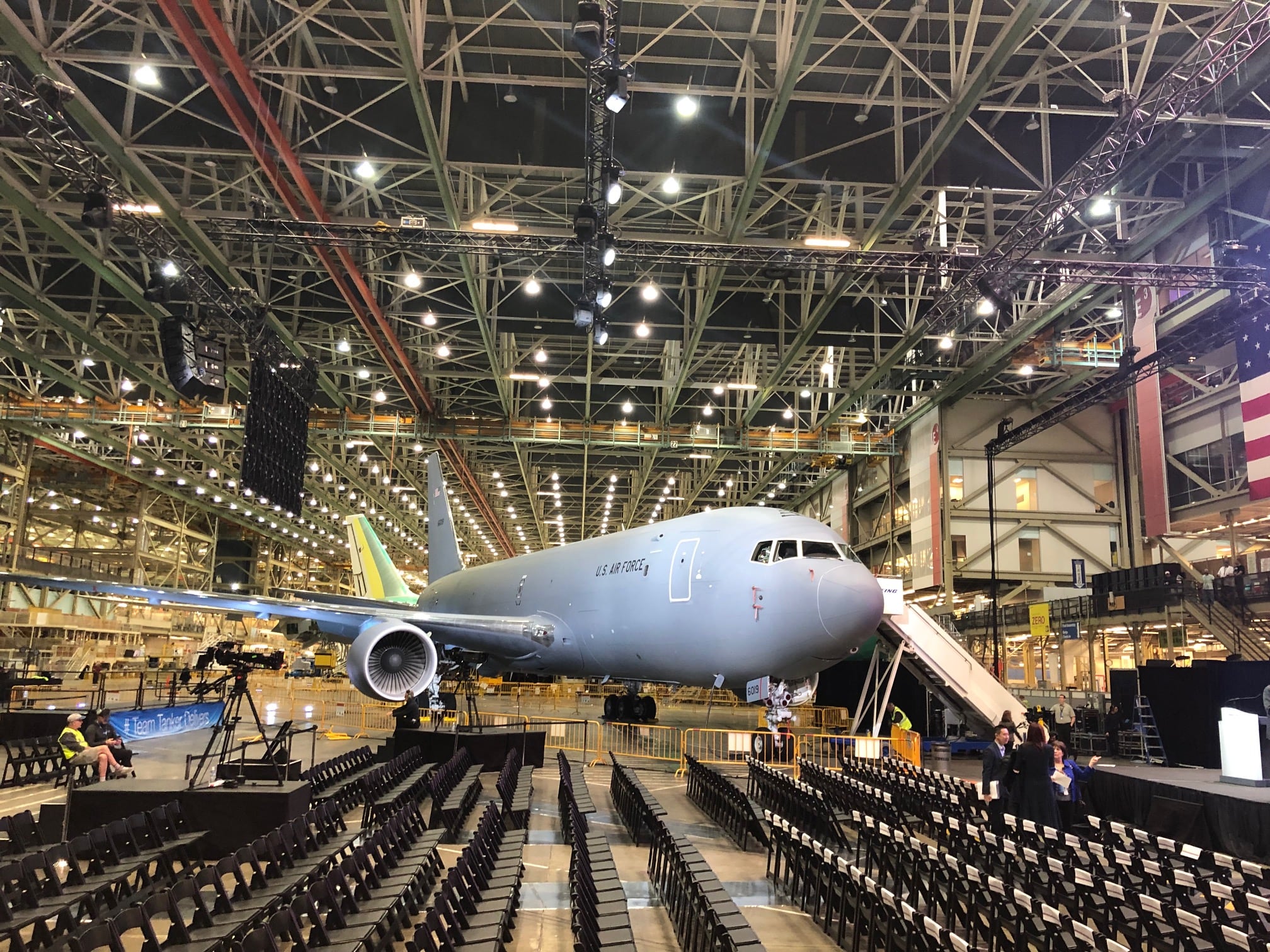New designs will be required to fix some of the issues with the refueling boom and the remote vision system on the Air Force’s new KC-46 Pegasus tanker, and that could take years to fix, the Government Accountability Office said in a report released Wednesday.
The refueling boom on the Pegasus could inadvertently scratch fighter jets’ stealth coatings, or otherwise damage aircraft, according to the GAO.
The good news is that the cost of delivering all 179 KC-46 tankers is now expected to come in at $43 billion, or nearly $9 billion cheaper than originally estimated in 2011, GAO said in the report. More, the KC-46 is ultimately expected to meet all 21 of its performance goals.
But delays in the program mean that Boeing will not be able to make good on its most significant delivery requirement — delivering nine sets of wing aerial refueling pods — until mid-2020, or nearly three years later than originally expected.
In addition to previously reported foreign object debris problems, the GAO report details deficiencies with the tanker’s remote vision system and refueling boom — which could damage aircraft, especially stealth coatings.
As has been previously reported, the remote vision system’s cameras sometimes had problems with glare when the sun shone at certain angles, GAO said. This caused the display screens to be washed out or blacked out during some test flights, and the aerial refueling operators had a hard time seeing the receiving aircraft’s receptacles to guide in the boom. The system also doesn’t provide enough depth perception in some lighting conditions, GAO said.
Boeing said it has already made changes, such as adjusting the contrast on the display screen and allowing operators to more quickly switch between different viewing options.
RELATED

However, GAO responded that those changes didn’t fix the underlying problem: KC-46 operators need to be able to refuel aircraft in all conditions, with sufficient visual clarity in all lighting conditions. Boeing has agreed to redesign the vision system to do so, but the redesign could take three or four years, plus several more years to install it in the planes.
That vision problem also caused the boom nozzle to bump into the receiving aircraft, without the knowledge of the refueling operators. This could damage the antenna or other structures near the refueling receptacle, GAO said.
This especially presents a problem for low-observable planes such as the F-22 fighter, because inadvertent boom nozzle contact could scratch or damage special stealth coatings, and make them visible to radar.
GAO also said the Pegasus’ telescoping boom is stiffer than expected, which means lighter aircraft — such as the A-10 and F-16 — must use more power to move the boom forward while in contact to compress it and stay in refueling position.
The need for additional force can create a problem when the receiving planes disconnect from the boom. When they disconnect, their additional power can cause them to lunge forward back into the boom, which could damage the plane and the boom itself.
For the A-10, because the receptacle is located on its nose, a collision with the boom could damage the windshield and put the pilot at a greater risk.
Boeing said that fixing that problem will require a hardware change, which could take three or four years to be designed and certified by the Federal Aviation Administration.
But because the contract didn’t specify how much force should be needed to compress the boom, and because the Air Force signed off on Boeing’s original proposed specifications, program officials said the Air Force will have to foot the bill. The total cost for designing and retrofitting roughly 106 KC-46s? More than $300 million, GAO said.
Stephen Losey is the air warfare reporter for Defense News. He previously covered leadership and personnel issues at Air Force Times, and the Pentagon, special operations and air warfare at Military.com. He has traveled to the Middle East to cover U.S. Air Force operations.





